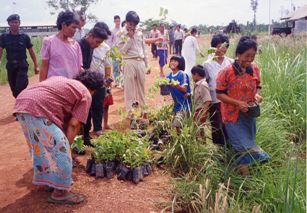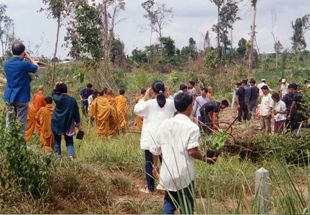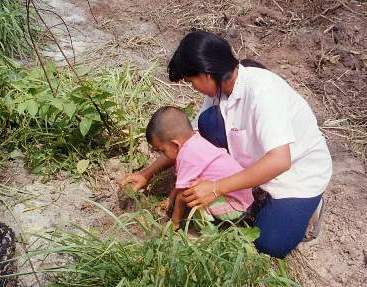


Acacia senegal
Gum arabic tree
(drawing to come)
Origin
Sahel, Africa.
Ecology
Annual rainfall: 100-800mm.
Normal temperature range: 14-43°C.
Altitude range: 100-1700m.
Seasonal adaptability: dry season of 8-11 months.
Soils: grows on sandy soils and also clay if no waterlogging. Optimum pH 5-8.
Light requirement: strong demander.
Description
Height at maturity: 2-13m.
Form: poor, short bole and spreading crown
Coppicing ability: good
Growth: 0.3m in height and 1.4cm in diameter per year.
Other: small, thorny, branchy tree with light grey to light brown scaly bark. Thorns black 3-7mm long, in triplets and claw like. Flower clusters cylindrical, 2-10 cm long, at leaf nodes. leaves bipinnate 2-6 cm long, shorter than flower clusters.
Primary advantages
Highly drought resistant, easy to propagate.
Primary disadvantages
Susceptible to grazing damage in early years. Can spread rapidly in fallow areas, becoming a weed.
Products and yields
Wood products: good quality fuelwood. Poles and agricultural tools. Timber yields are about 5m3/ha/yr from natural forest. Where gum is harvested wood yields drop to about 1m3 or less in plantations.
Fuelwood: 3200kcal/kg
Fodder: leaves and pods have high protien content. Seeds are also eaten by humans.
Other: the major source of gum arabic. Root fibres are used to make ropes and fish nets. Bee fodder. Suitable for erosion control and soil improvement, especially in desert conditions.
Propagation
Seed, either in plastic pots or by direct seeding.
Seed treatment
Pretreatment: soak in concentrated sulphuric acid for 20-30 minutes or soak in cold water for 48 hours.
Management
Needs protection from grazing, weeds and fire for 2 years.
Agroforestry uses
Intercropping, at wide spacing (10x10m), live fences and pastoral systems when established.